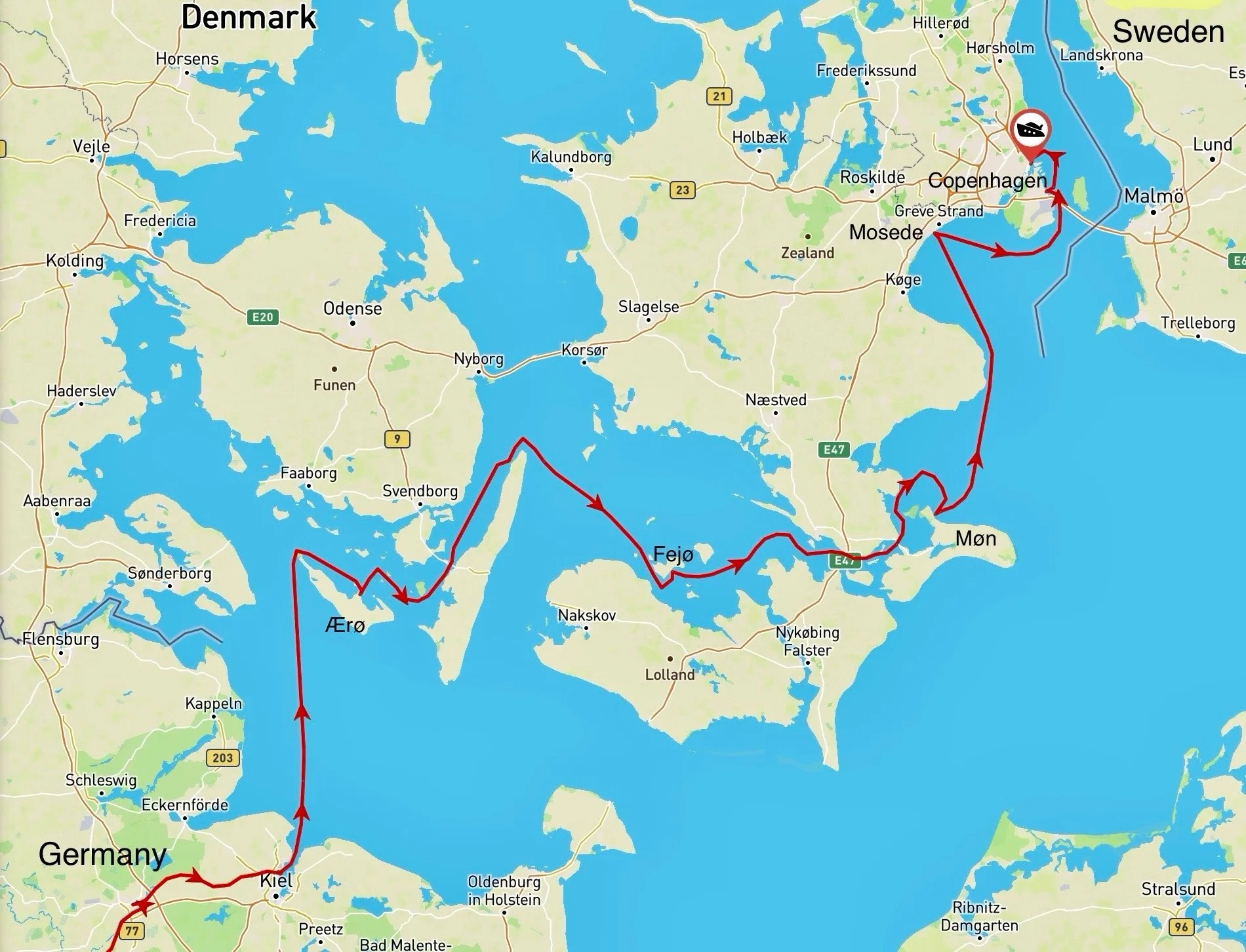Into the Baltic Sea
We watched the sky brighten as the day dawned and prepared to sail out of the Kiel Fjord and into the Baltic Sea. The water was calm and the sun warm, though the clouds rolled in as the day emerged.
We cruised due north entering Denmark just a couple of hours later. Denmark is a country of islands - well over 1400 in fact. Out of these, there are 443 named islands of which 78 are populated. One would conclude then that nearly a thousand islands of Denmark are yet to be named.
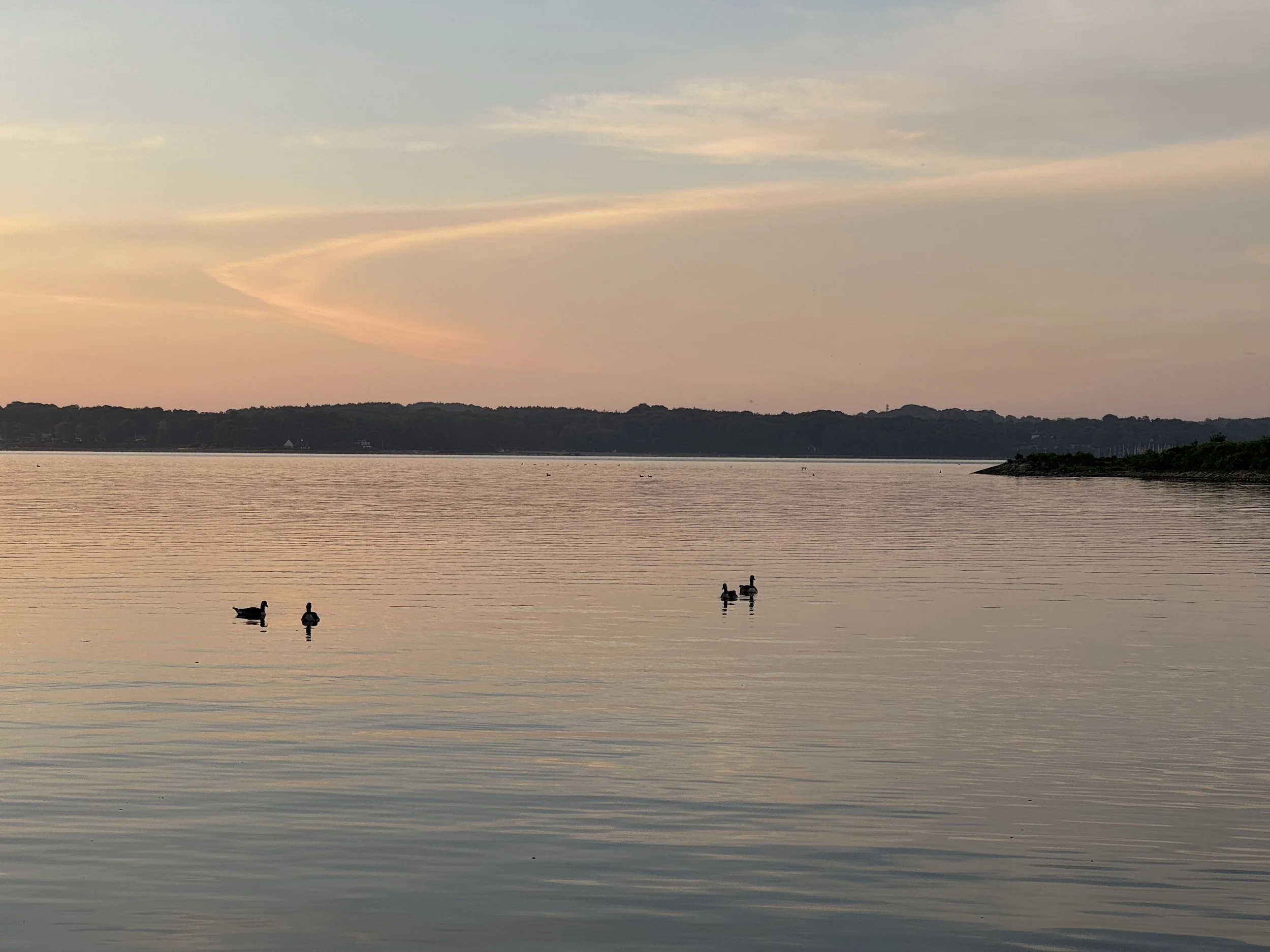
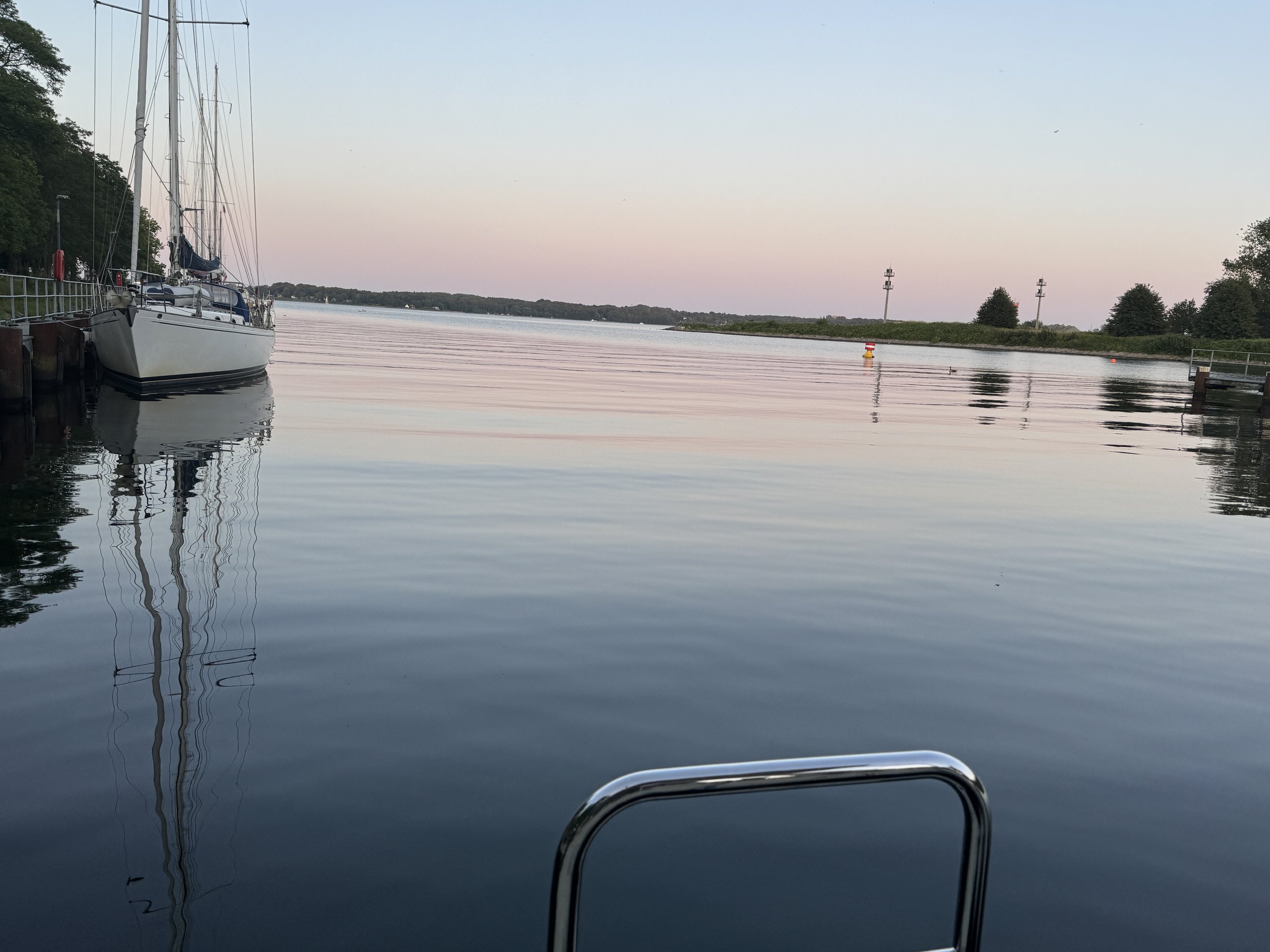


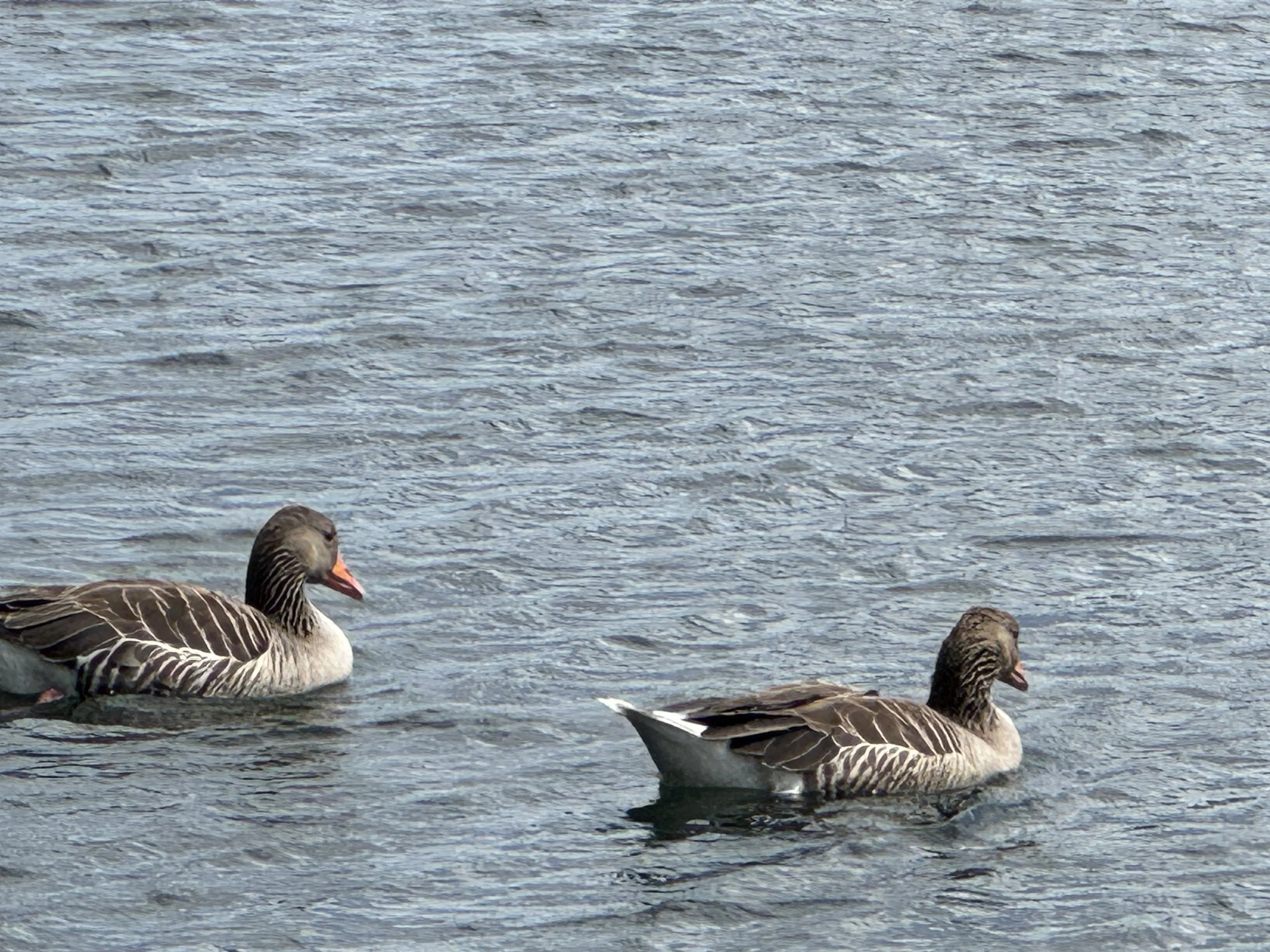

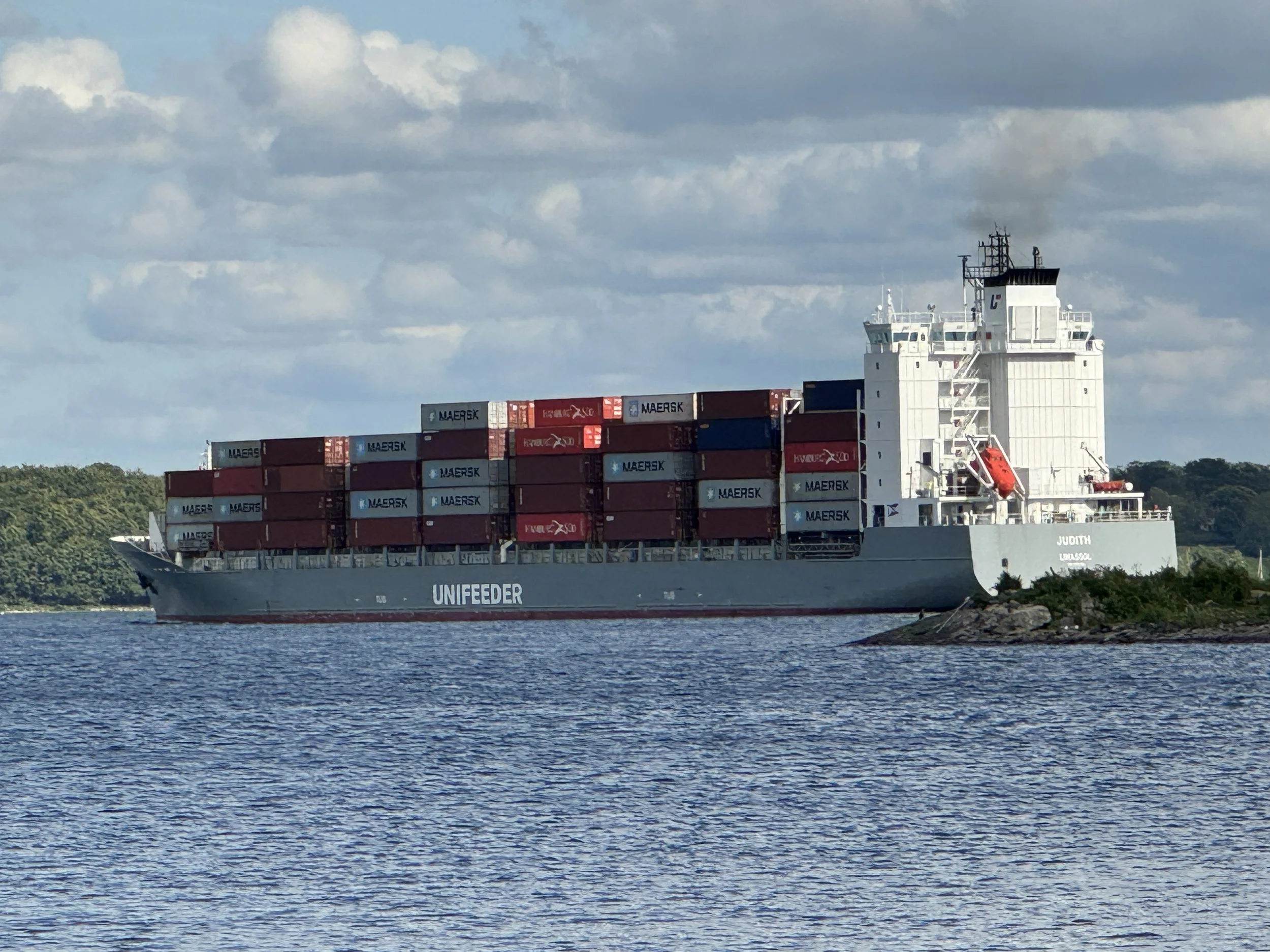

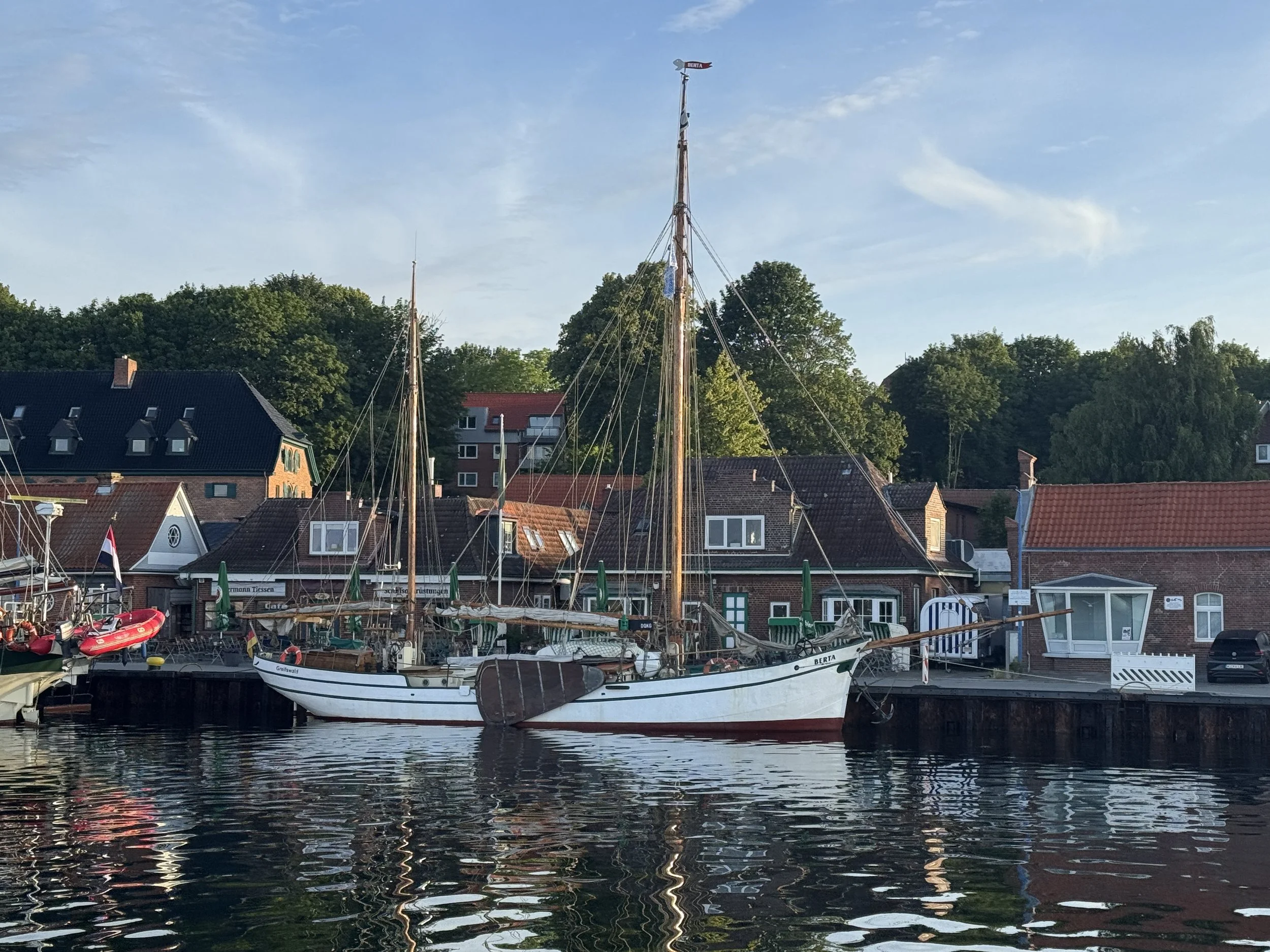

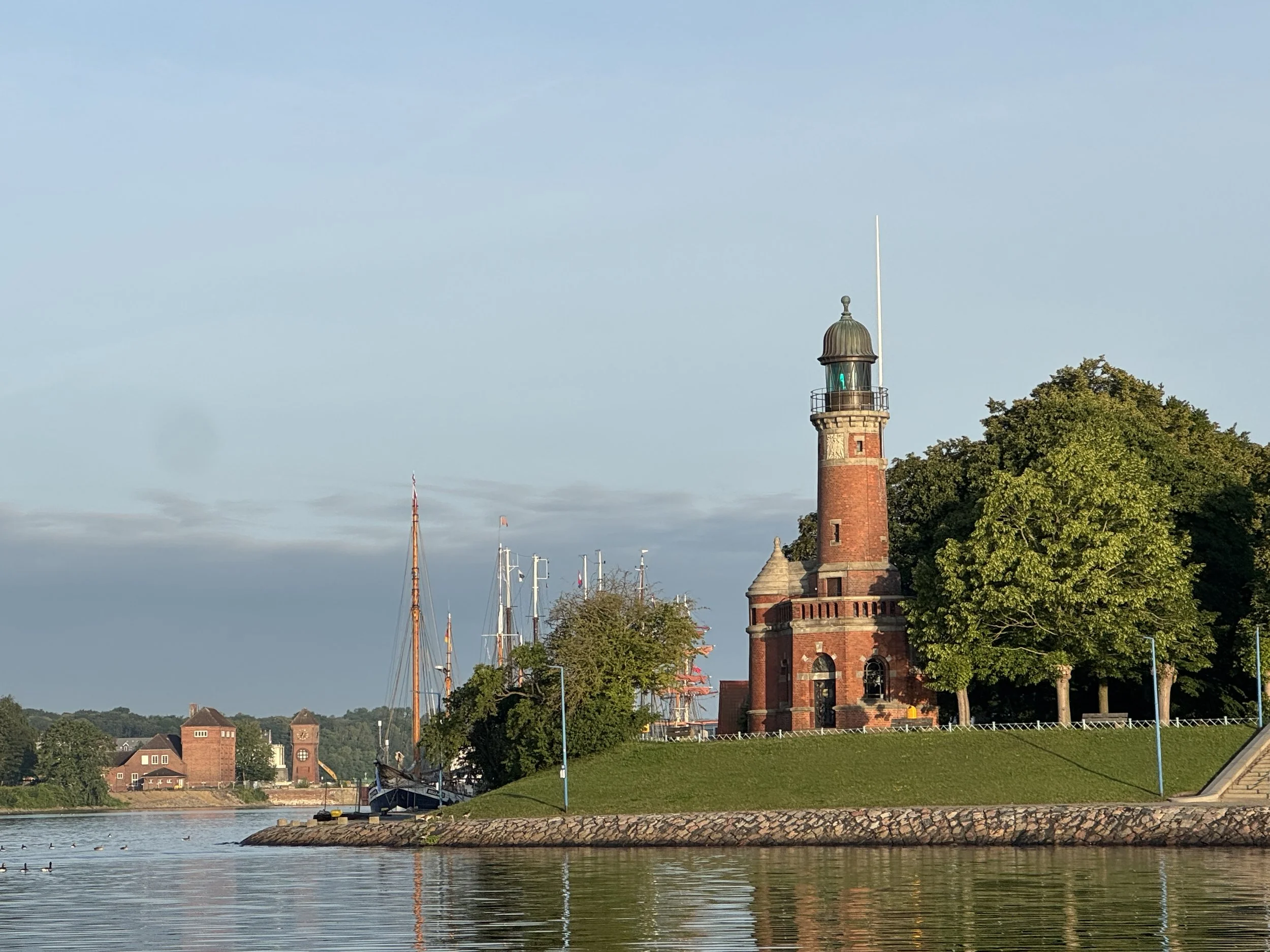
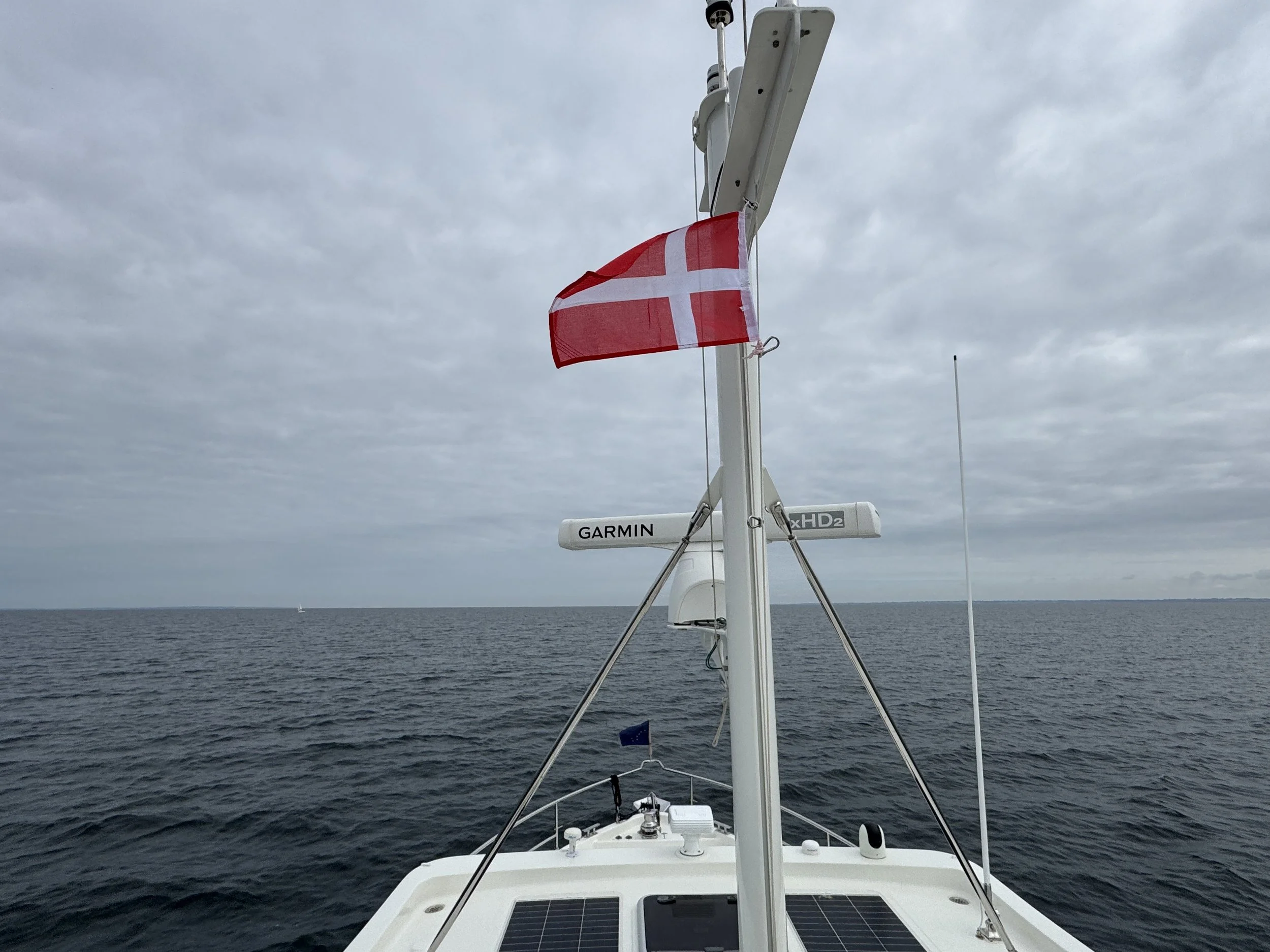


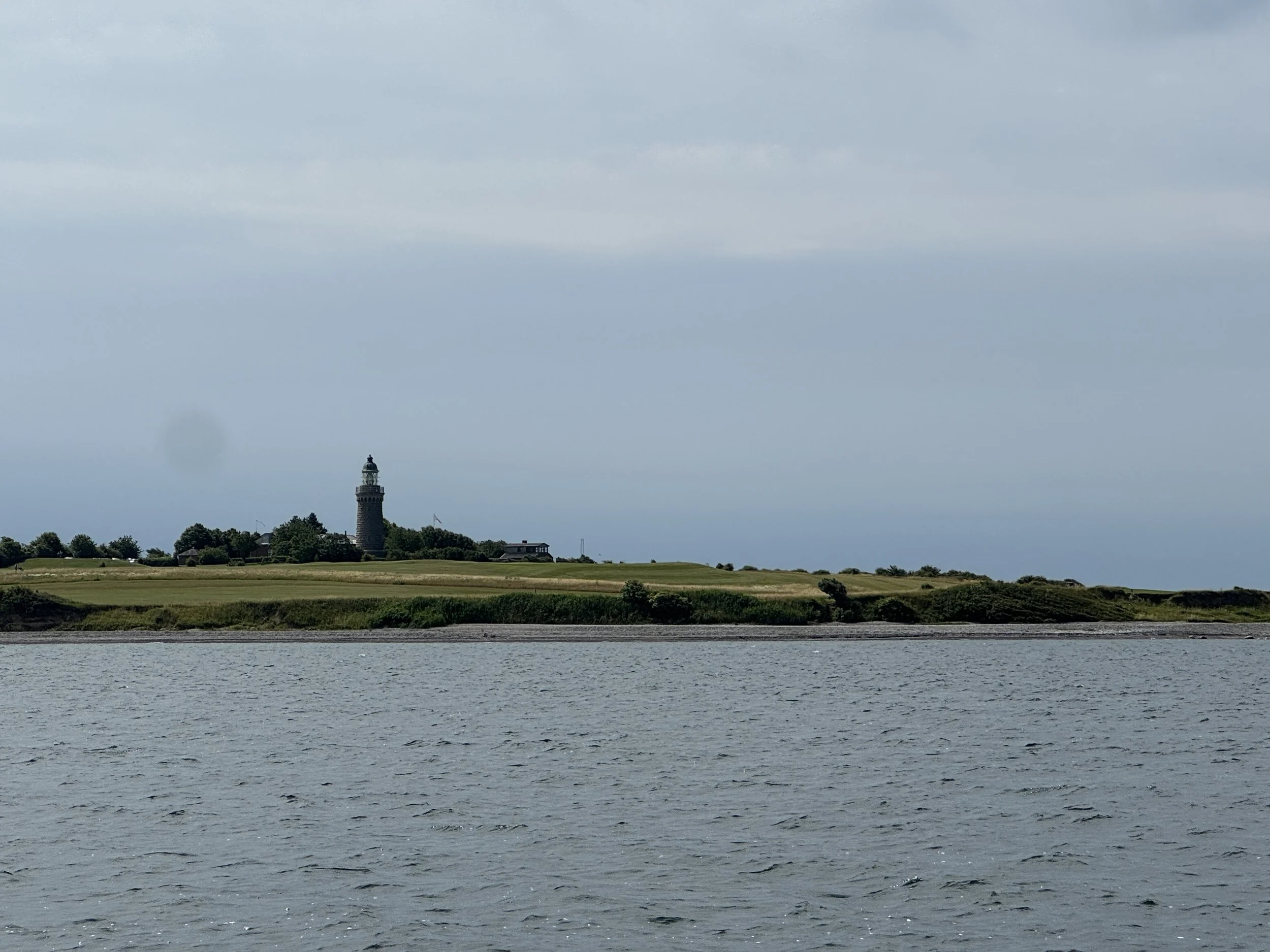

The island of Ærø is due north of Kiel, Germany. We followed the narrow channel into the harbor in the town of Ærøskøbing, one of three main towns on the island. We found a box berth we could fit into and settled in for a few days to wait out a storm.

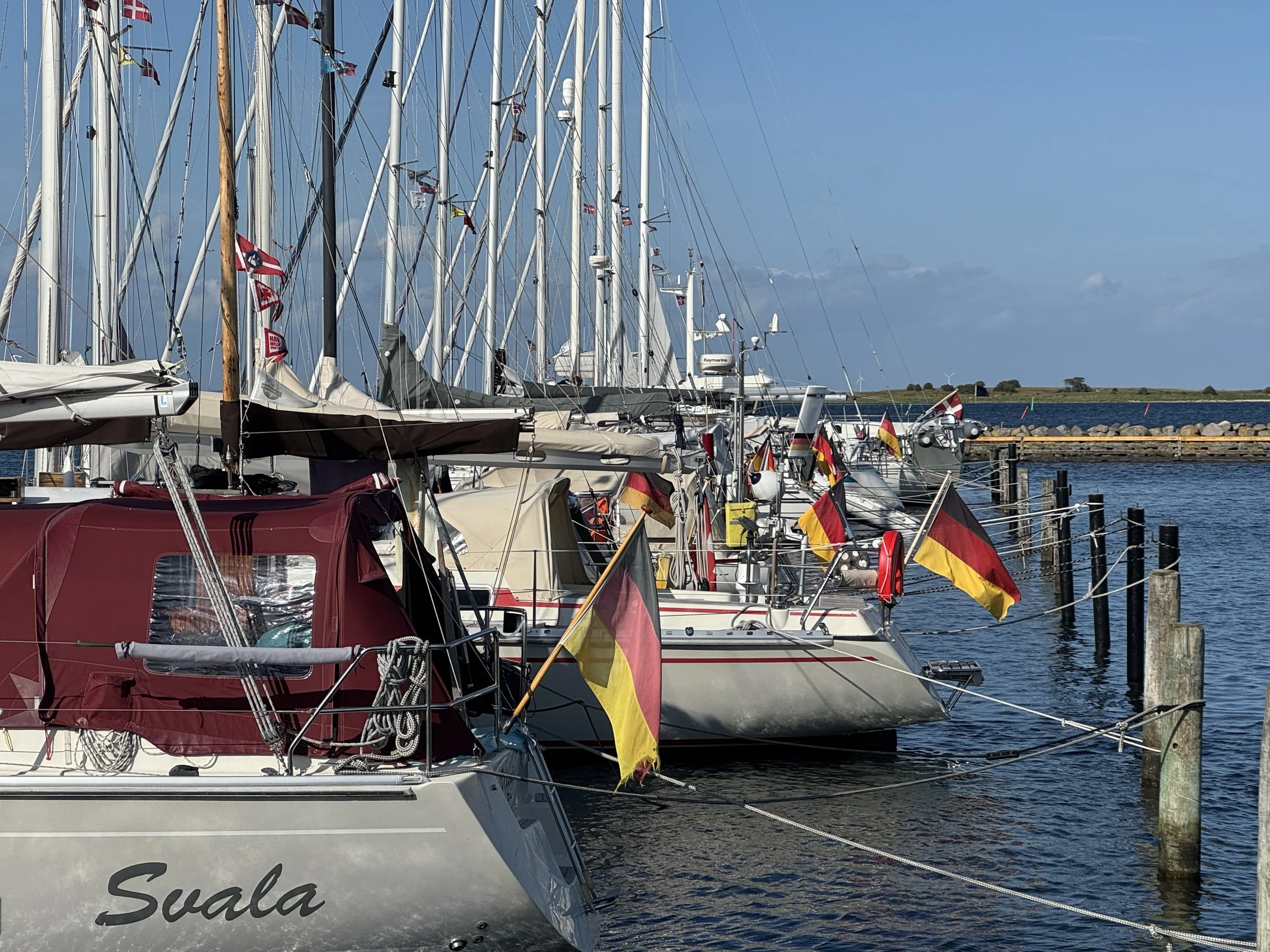
That evening we took a stroll down the cobblestone streets lined by rows of brightly colored half-timbered houses, their walls curved by the weight of time. I read they are some of the best preserved 18th century architecture in Denmark. The shops in the village are filled with produce from organic farms, local beer, whisky, soaps and art of all kinds.

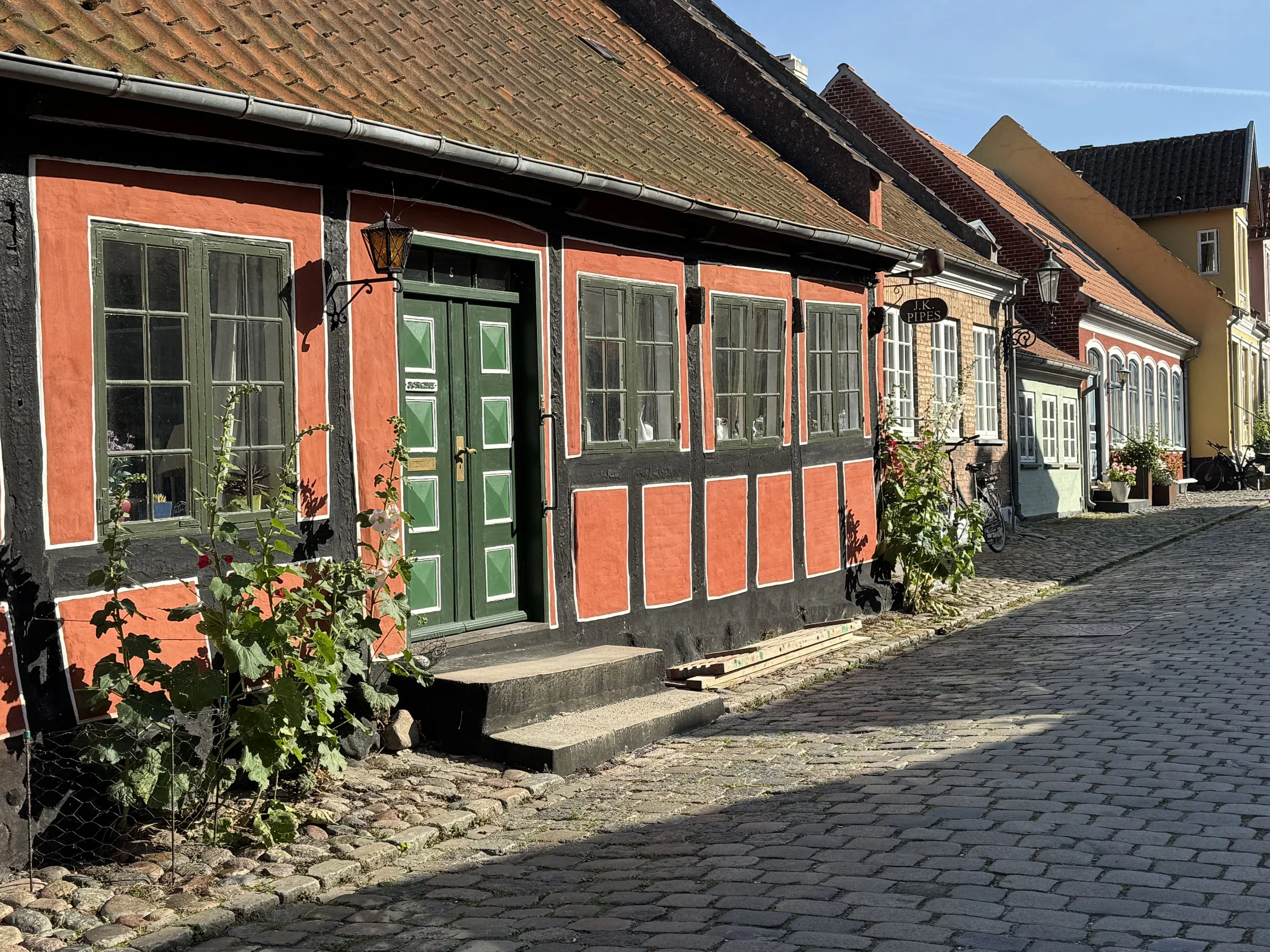



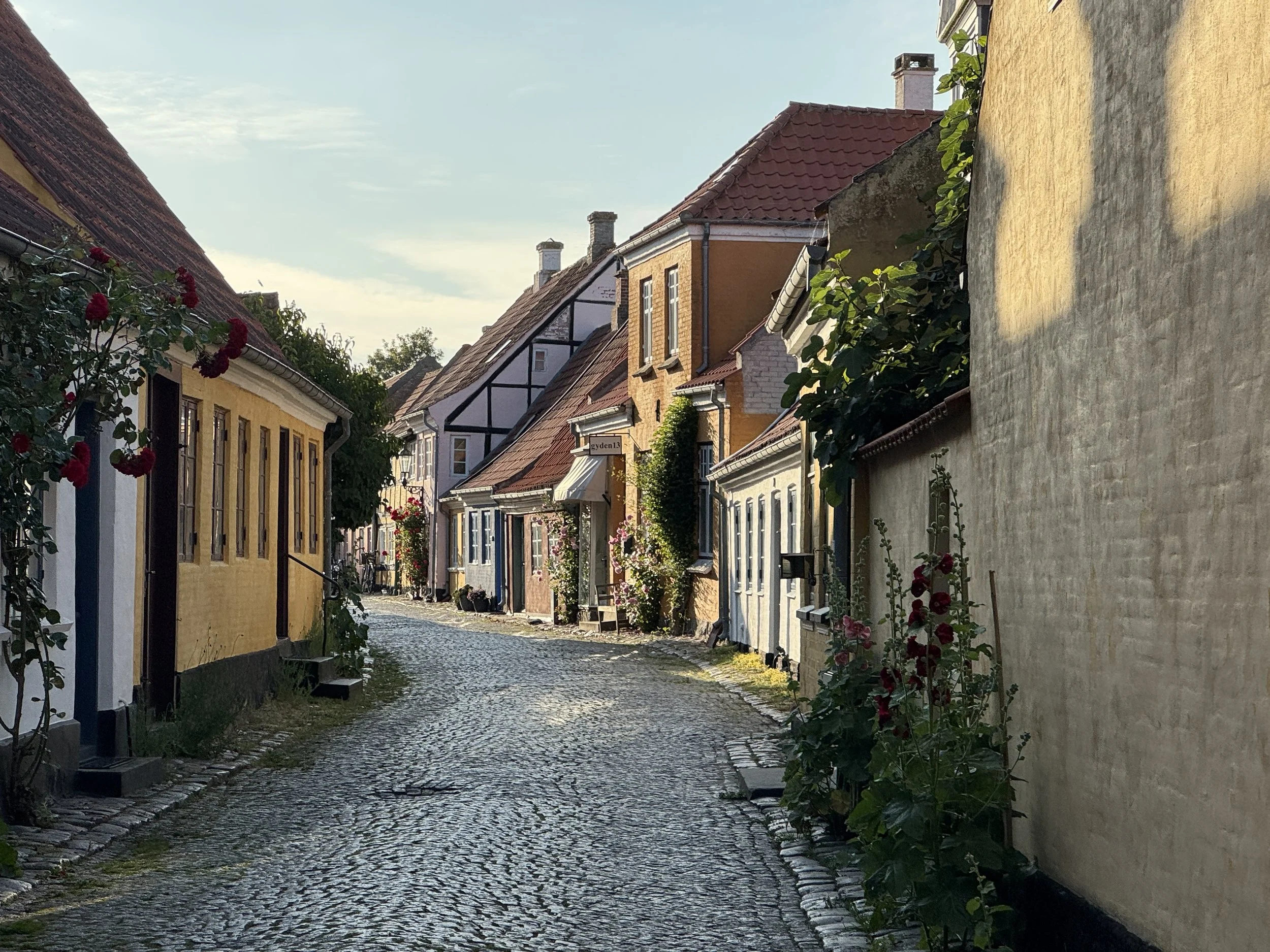
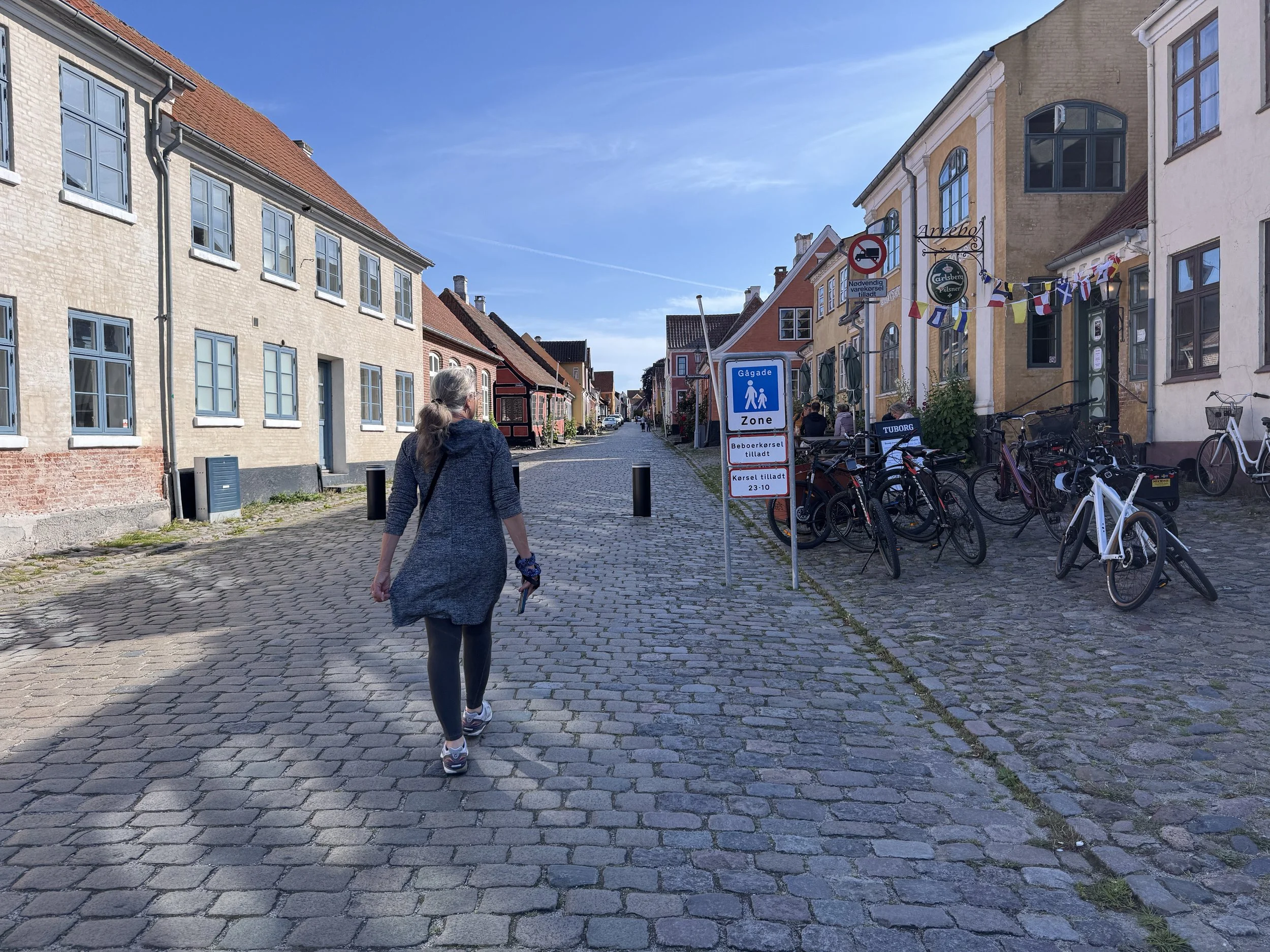
This 88 km² (34 mi²) island is crisscrossed by biking trails. There is a 100km (62 mi) track which encircles the island, a hilly 17km (10 mi) ride that take you through the “Ærø Alps”, and plenty of shorter, flat routes that are accessible to all ages and abilities. For hikers, the Archipelago Trail (~35km or 21 mi) along the south-side of the Island is a unique experience with several options for shelters/camps to stay in along the way.
The next day we walked to the opposite side of the island past the iconic 100-year old bathing huts which are lovingly maintained by the owners who pass them down from generation to generation. The plots where they stand are rented - forever. And the clauses are strict: no extensions, no additions and no installation of electricity or water.
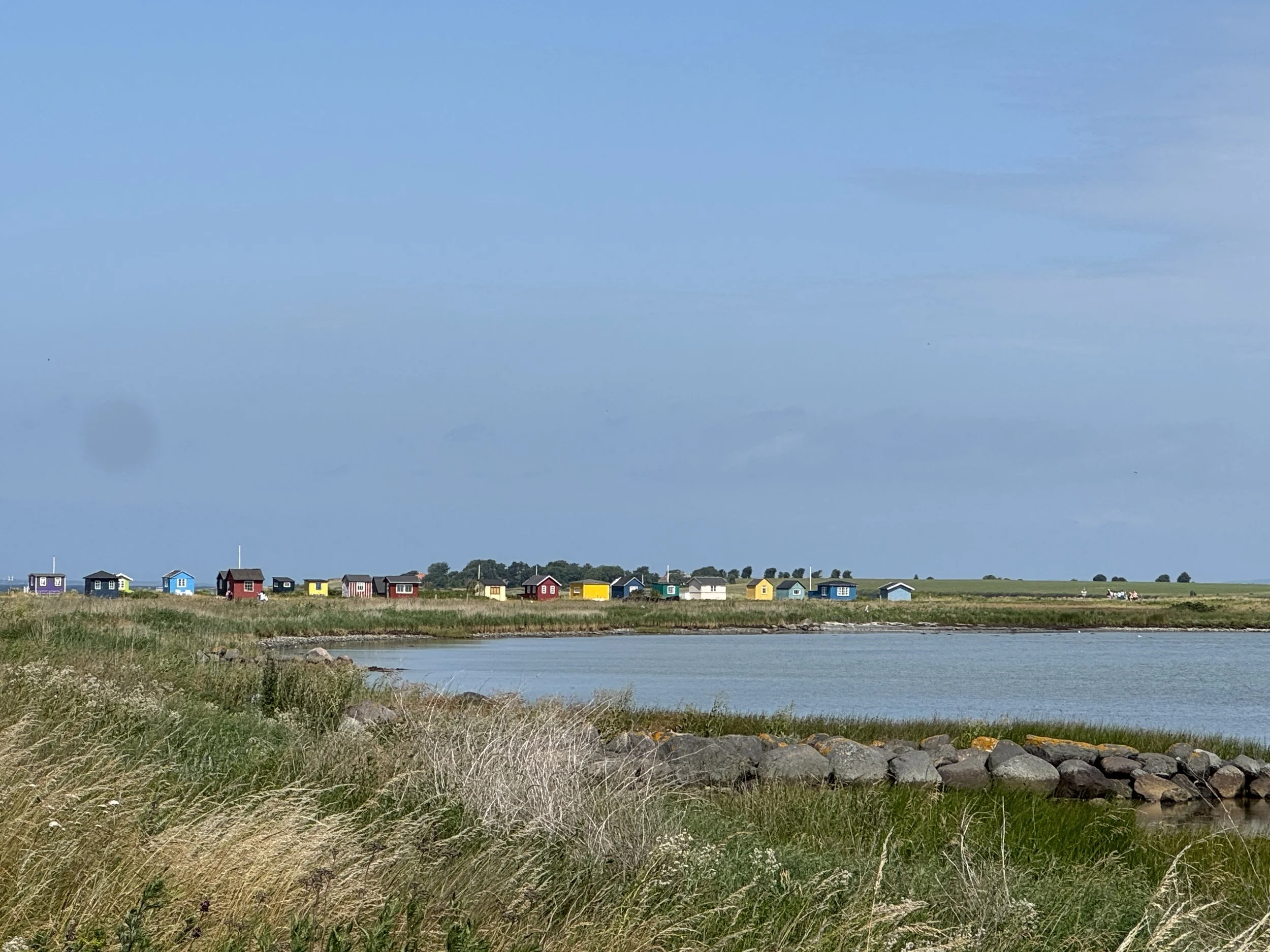
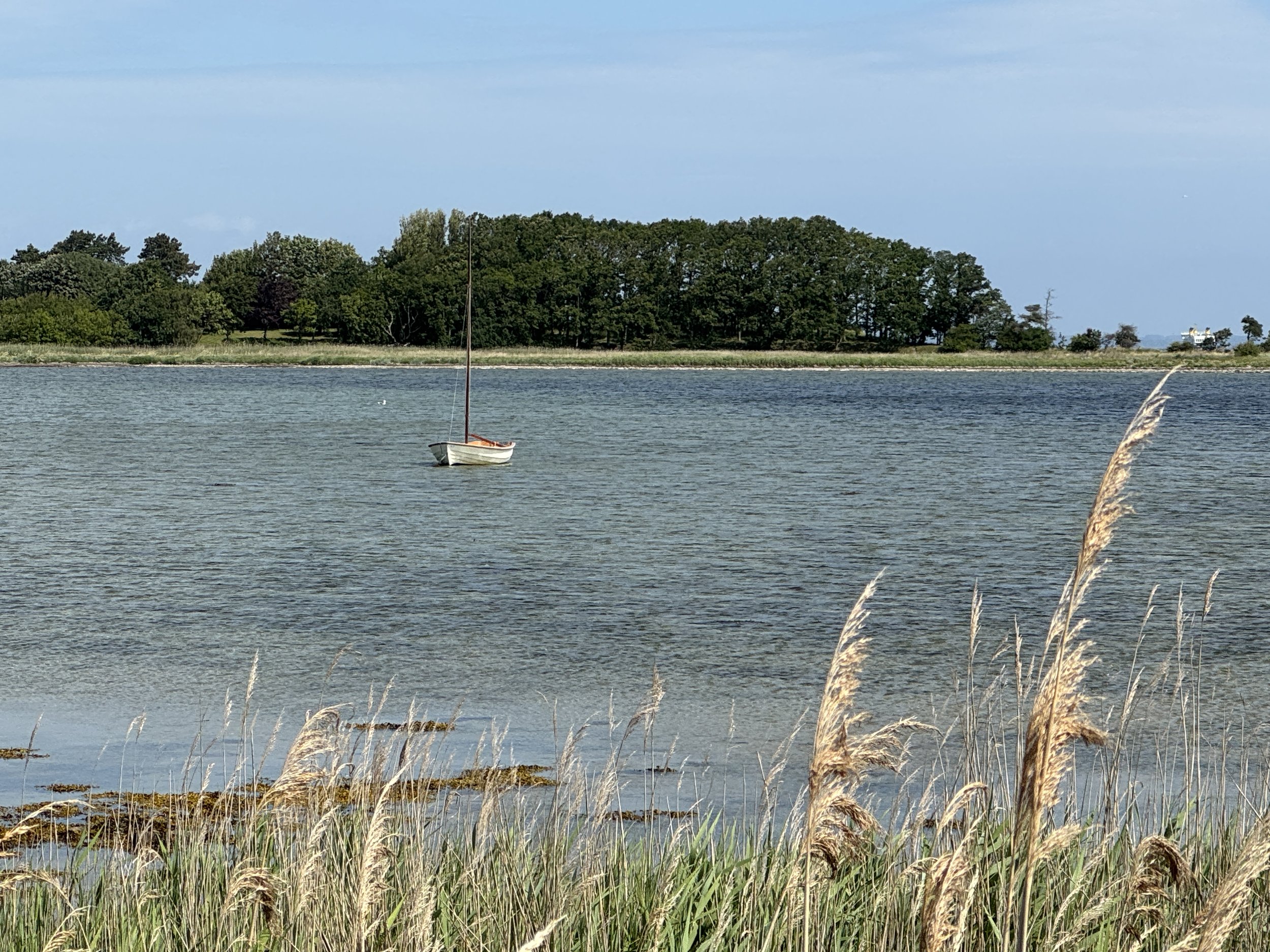
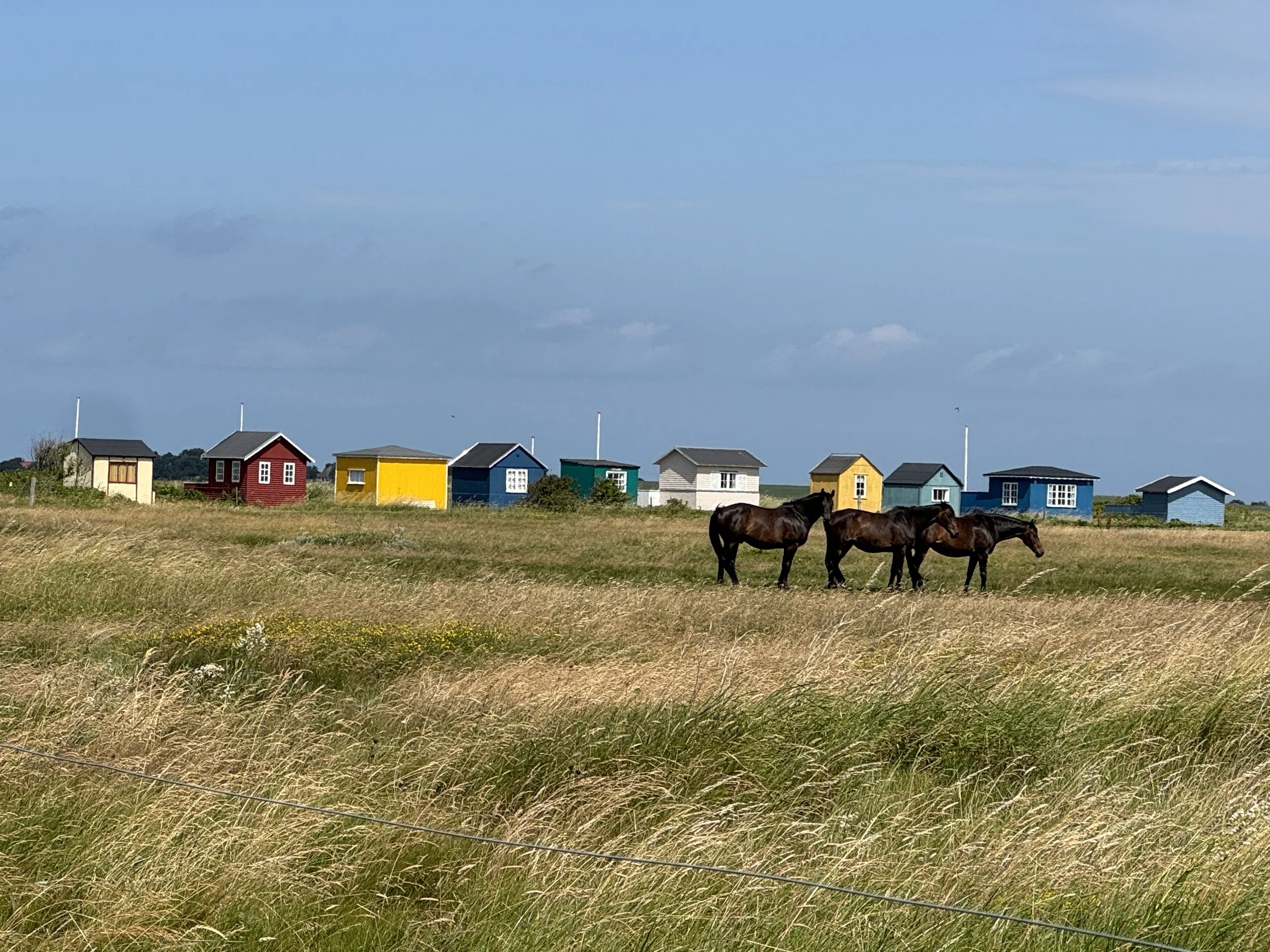

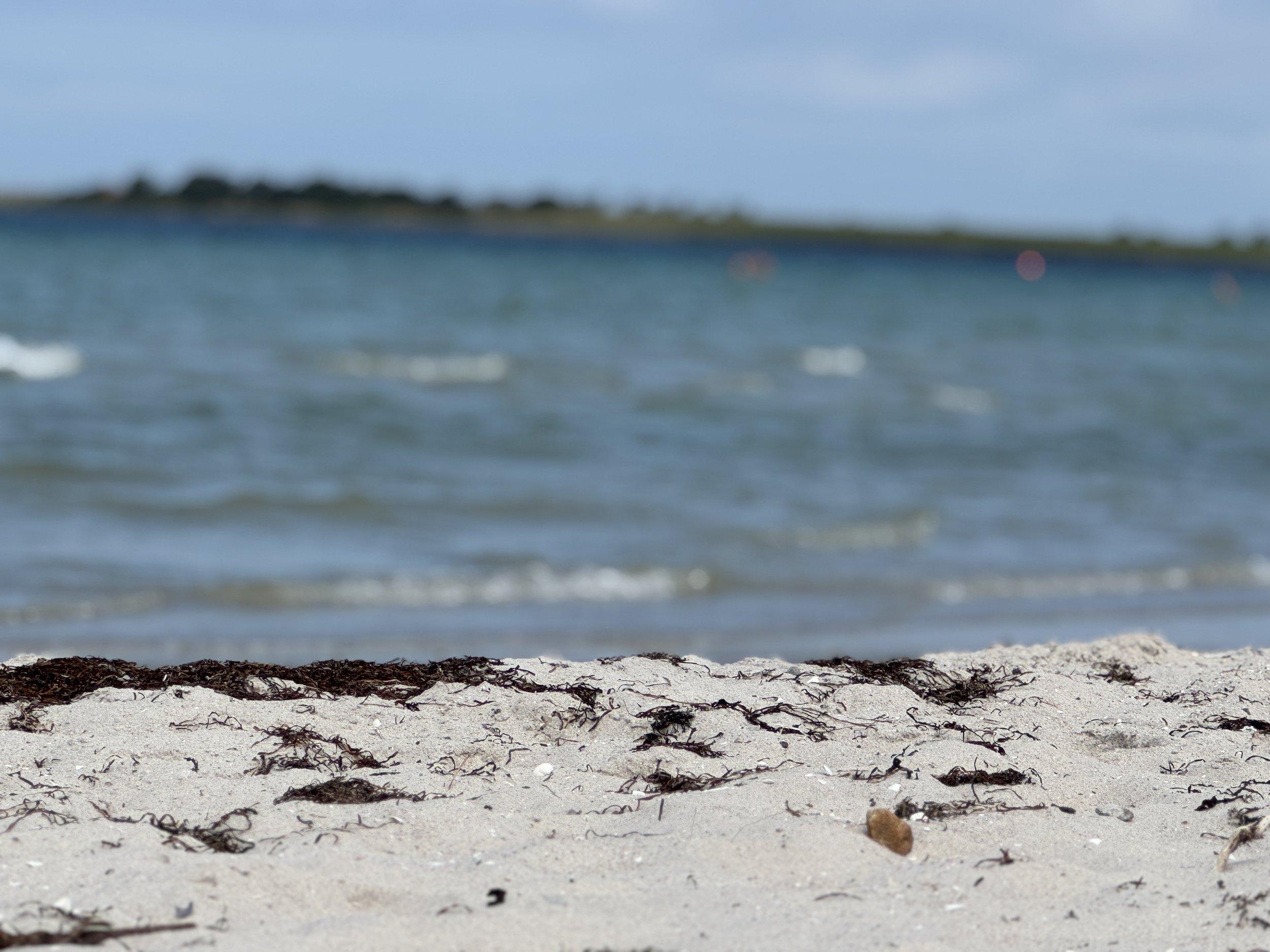
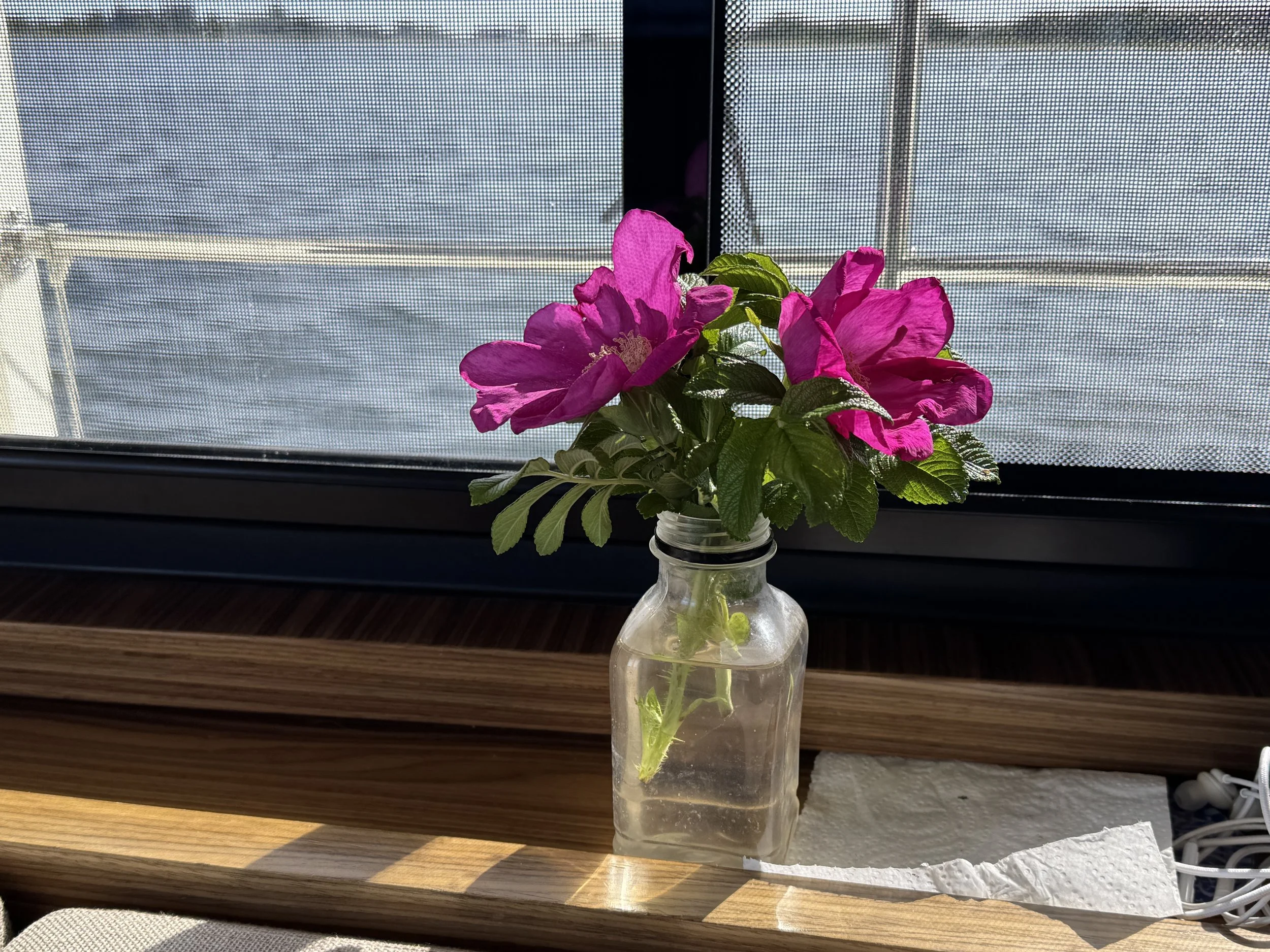
We left Ærø on a windy morning and sailed northeast through a narrow passage between the islands of Fyn and Langeland.
Fyn is Denmark’s third largest island occupying an estimated area of 3100 km² (~1200 mi²) with a population of ~456,000. Odense is the biggest city in Fyn and it was the birth place of Danish author Hans Christian Anderson. The island is known for it’s fertile land, fields and orchards. As we passed between the two islands we noticed Langeland has a series of narrow beaches alternating with low cliffs and inviting bays.
Once through the passage we turned southeast and on towards the tiny island of Fejø dropping anchor for the night on the leeward side in a very shallow bay. About 650 people live on Fejø and there are at least as many apple trees. It was wonderful to be out of the swell, in a broad sheltered bay, floating gently on anchor again. The morning dawned bright and we slowly drifted off the hook pointing our nose eastward through another very narrow, and thankfully well marked, channel sprinkled with longline fishing markers. We wove our way through the flags, avoiding the oncoming sailors while staying in the narrow strait just barely deep enough to navigate.
We passed rolling hills and expansive farm fields, arriving on the north side of the island of Møn where we spent another lovely evening on anchor beneath the island’s white chalk cliffs and adjacent sandy beach.
The massive chalk cliffs, the highest one towering 128m (420 ft) above the water, were created from the shells of microscopic creatures that lived over 70 million years ago. They’re surrounded by the oldest birch forest in the country, some of the trees are over 400 years old. The chalky soil and birch forest creates a unique biome that supports rare species of insects, fungi and flowers which only exist there. Møn claims over 112 types of mushrooms, 11 of which grow only in these forests. It is home to the fastest animal on earth (the peregrine falcon) and boasts species of rare orchids and butterflies that can’t survive anywhere else.
The weather was brisk yet the water was quite warm; a truly relaxing, therapeutic and revitalizing spot.


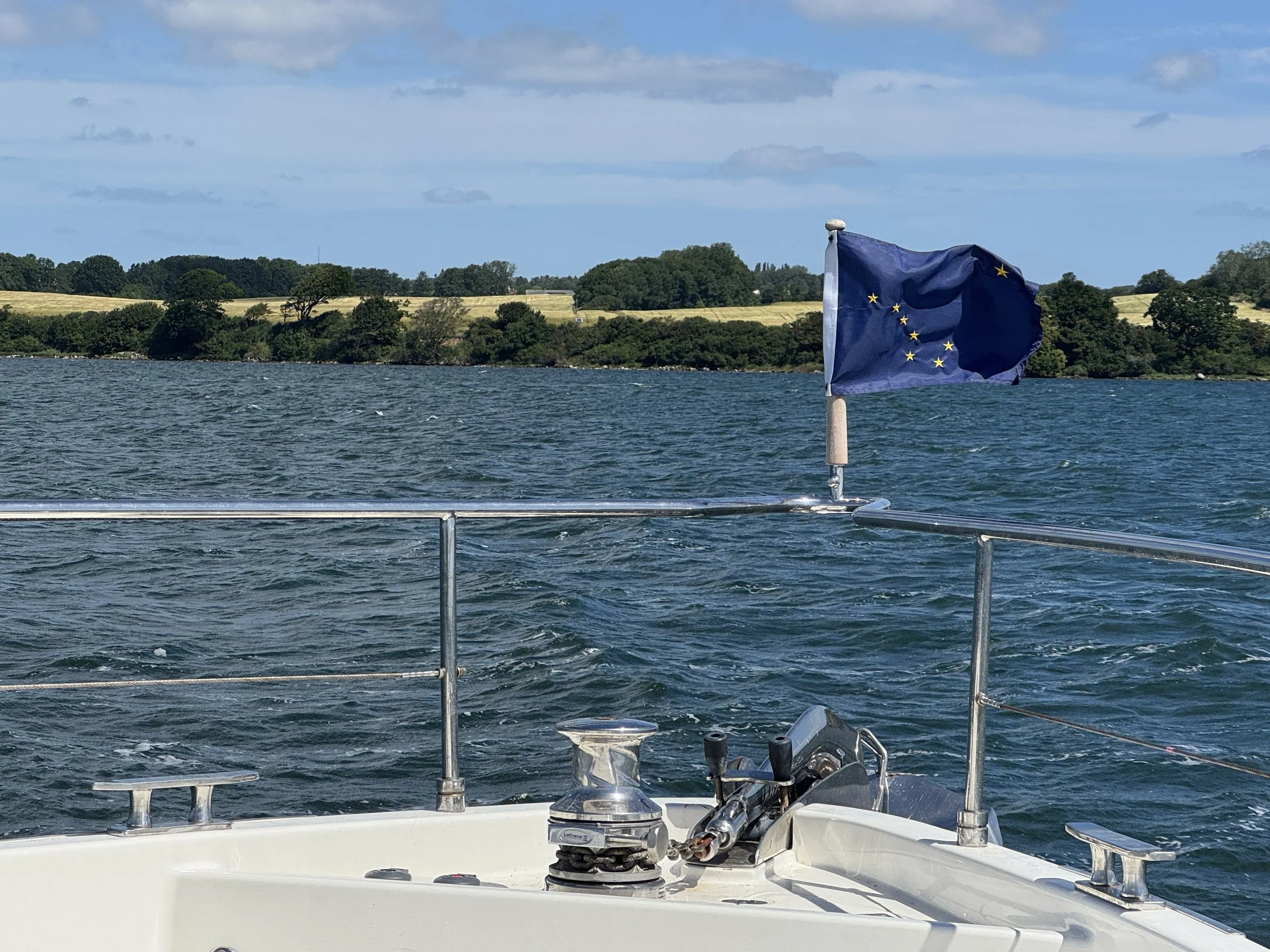
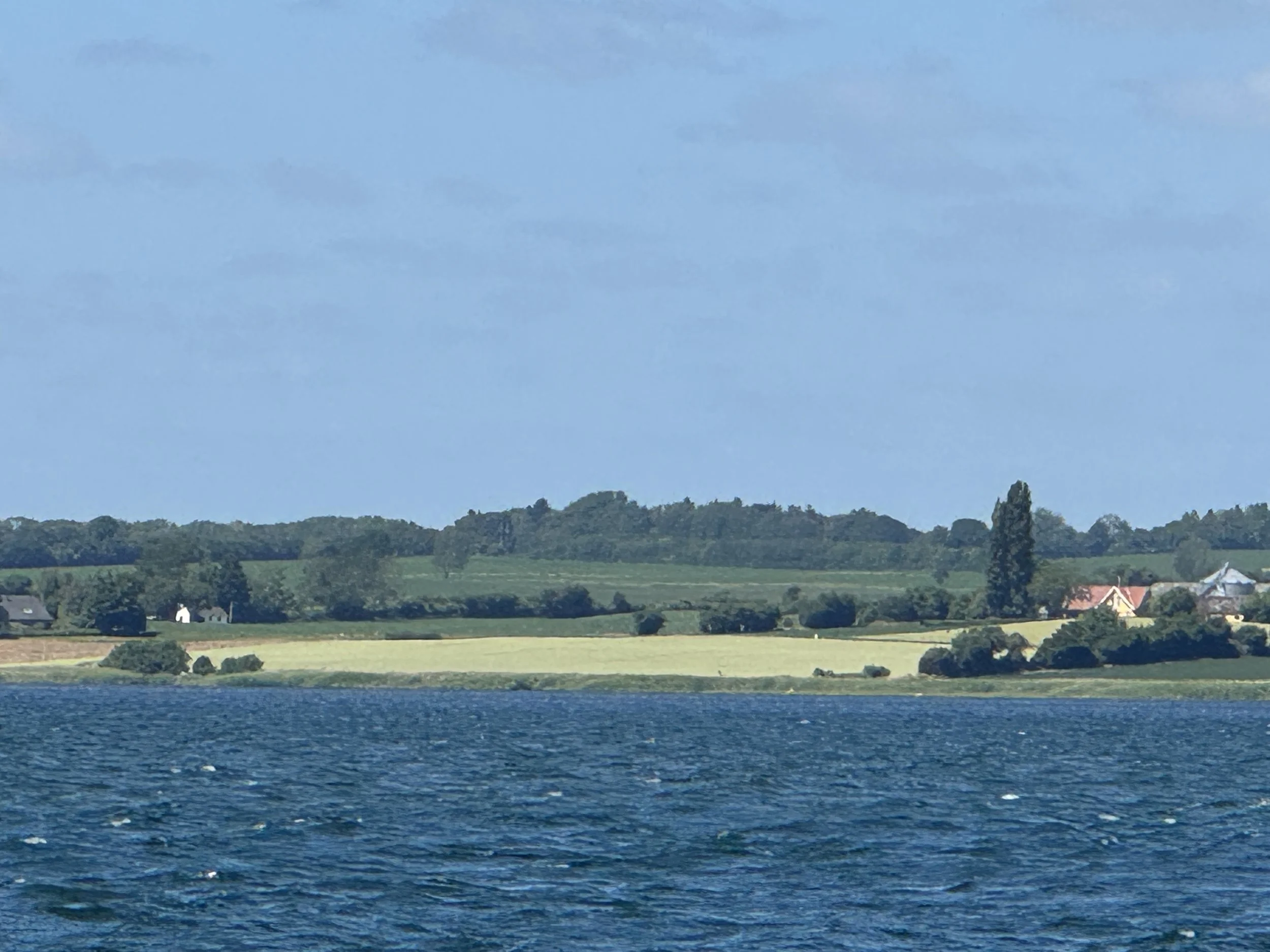
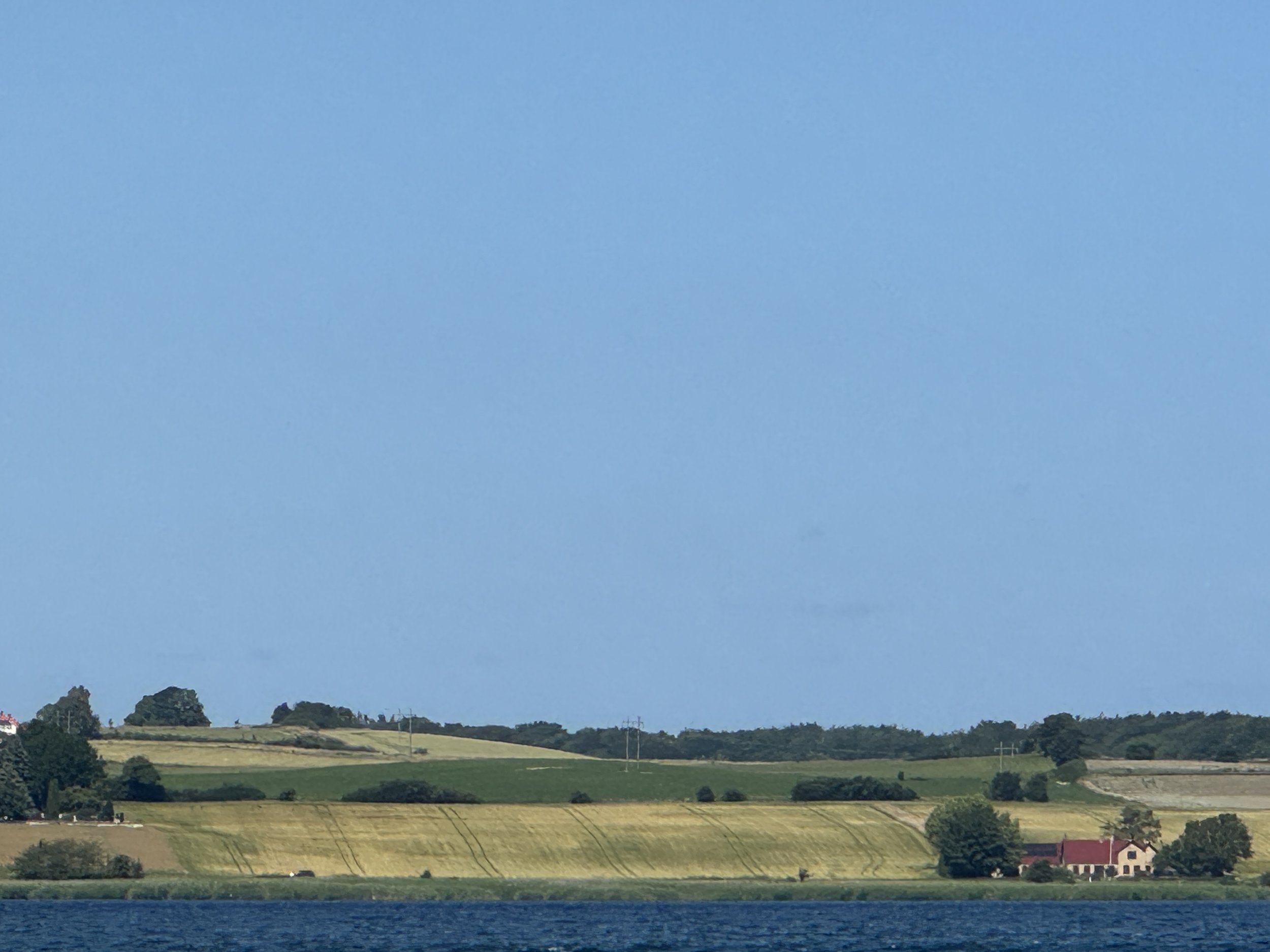
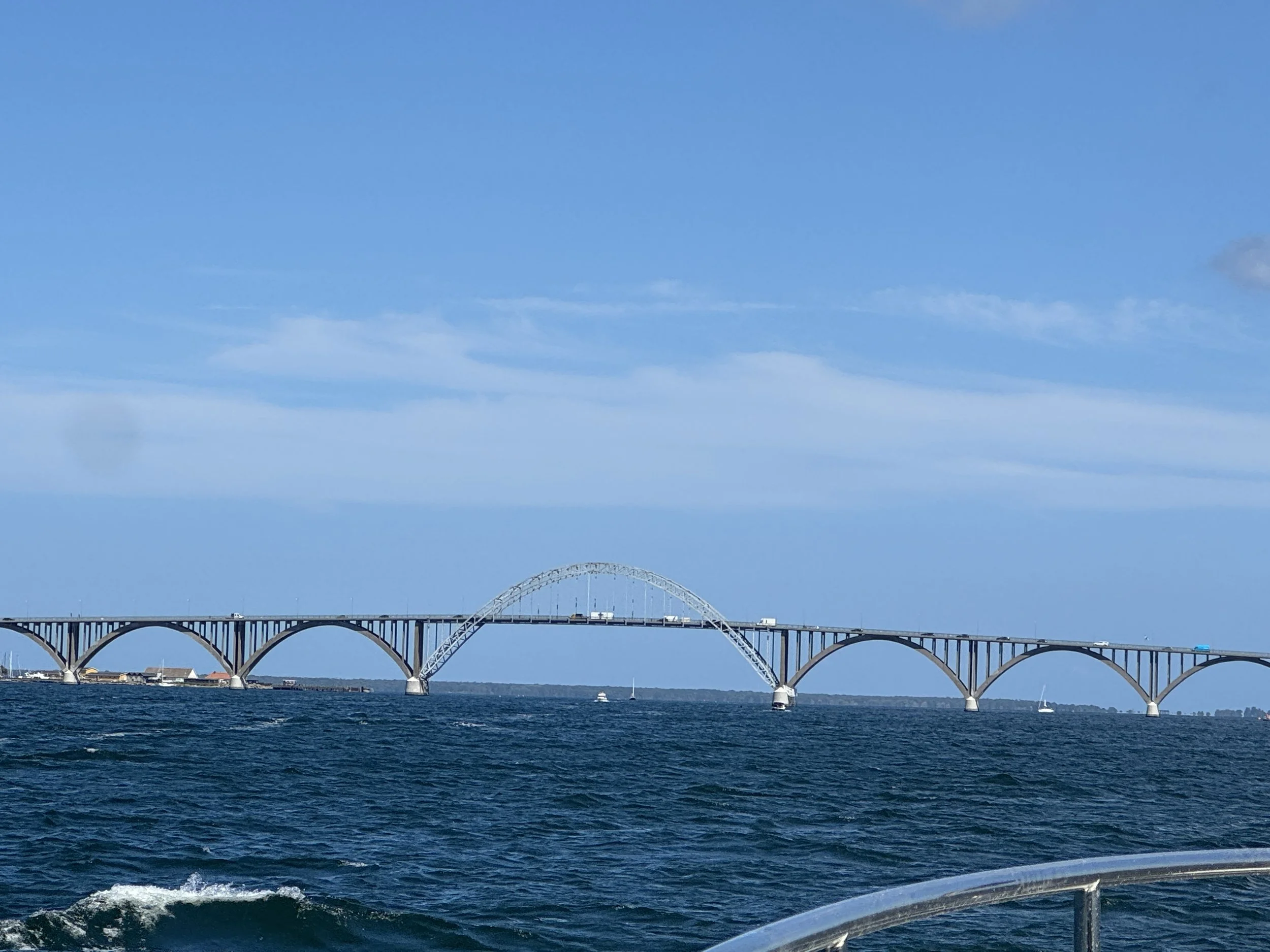
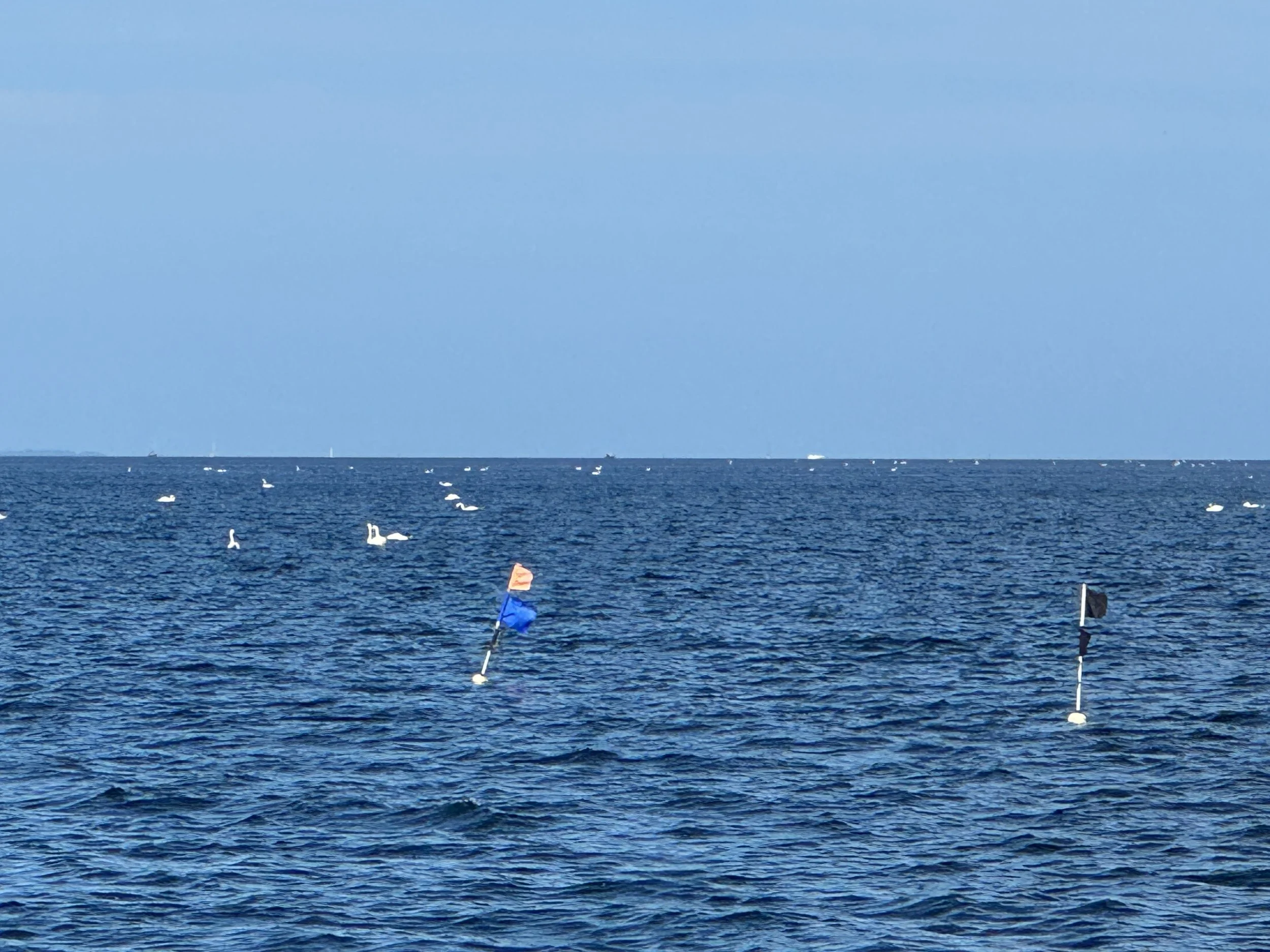
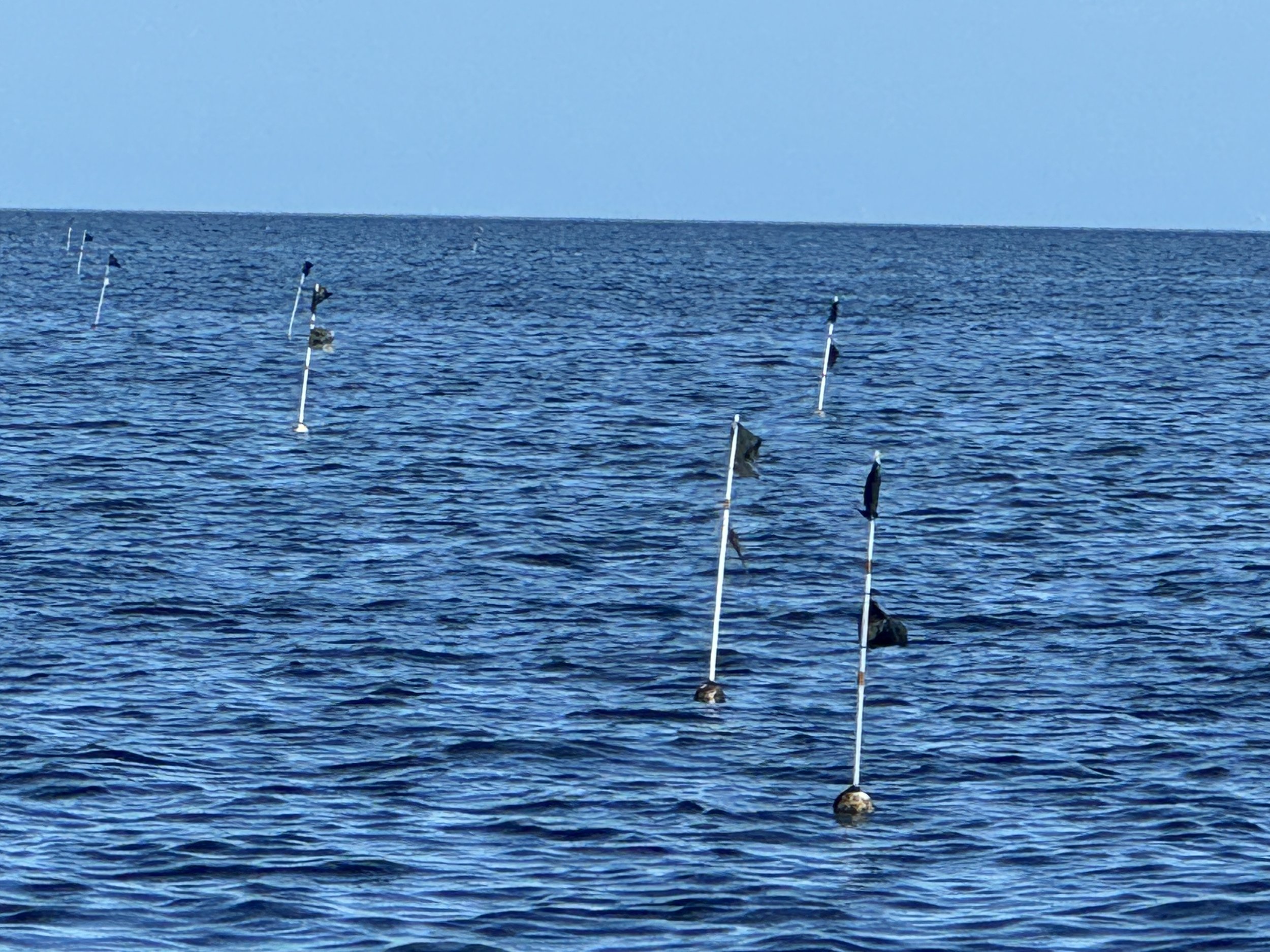
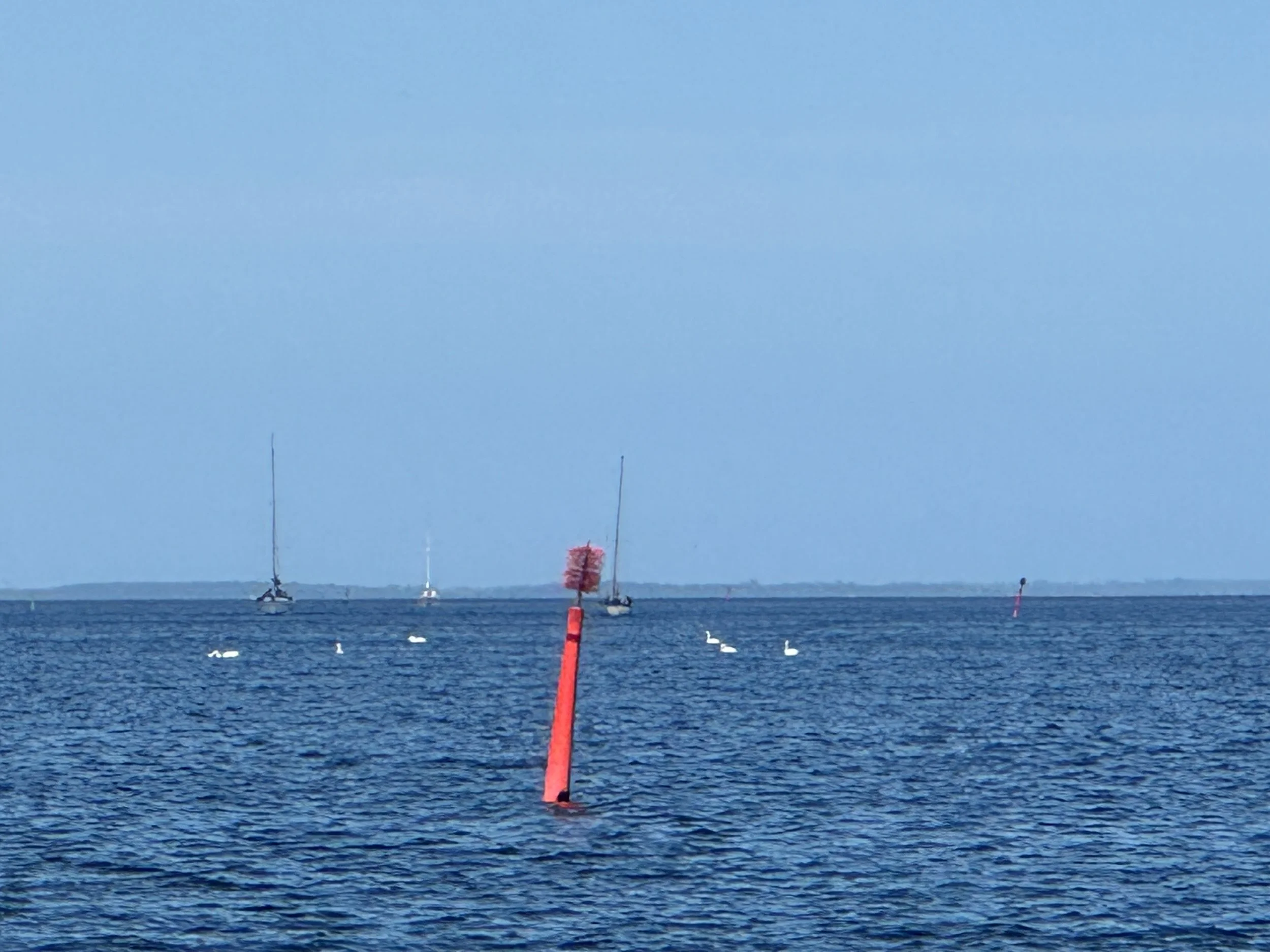

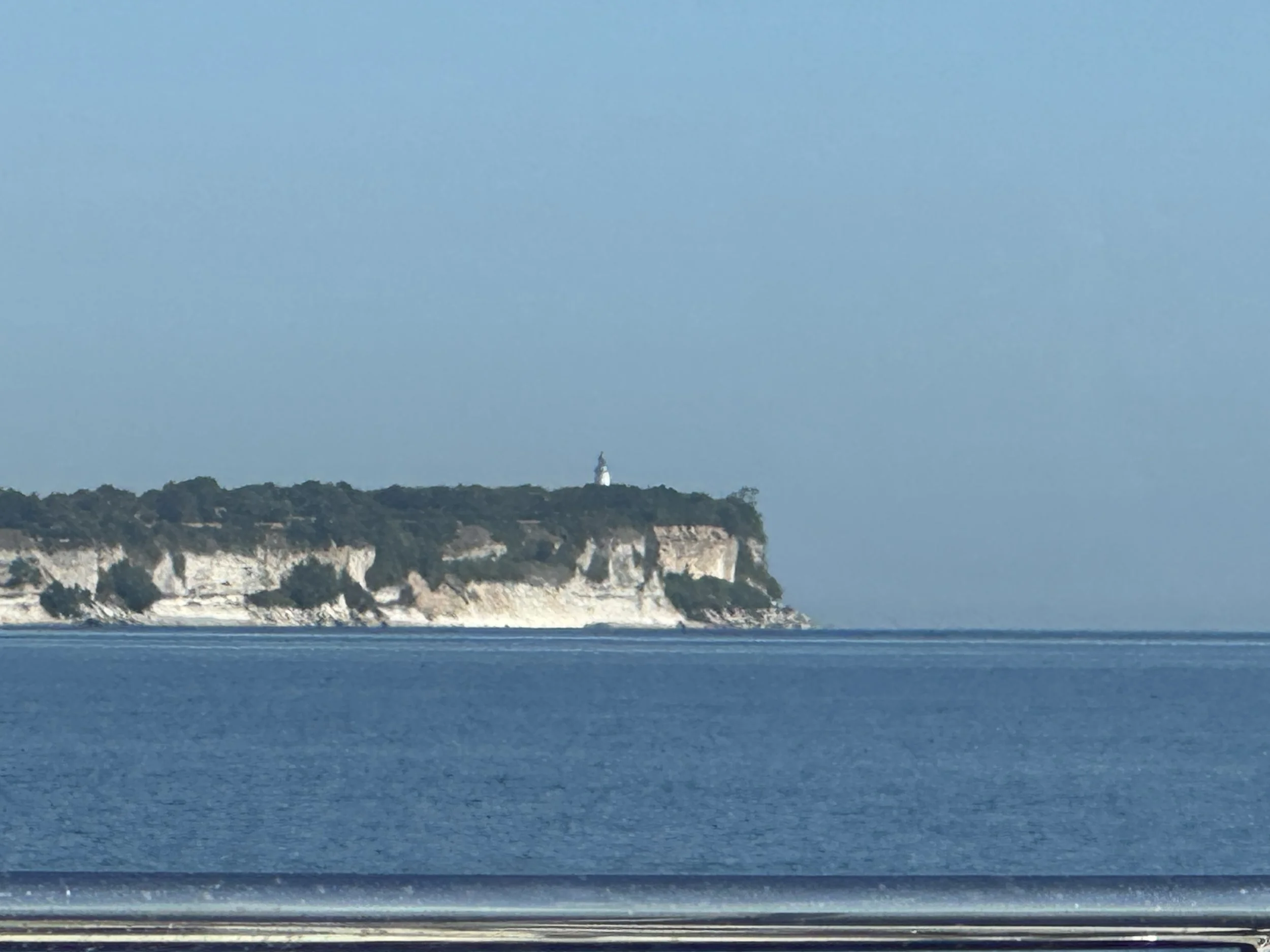

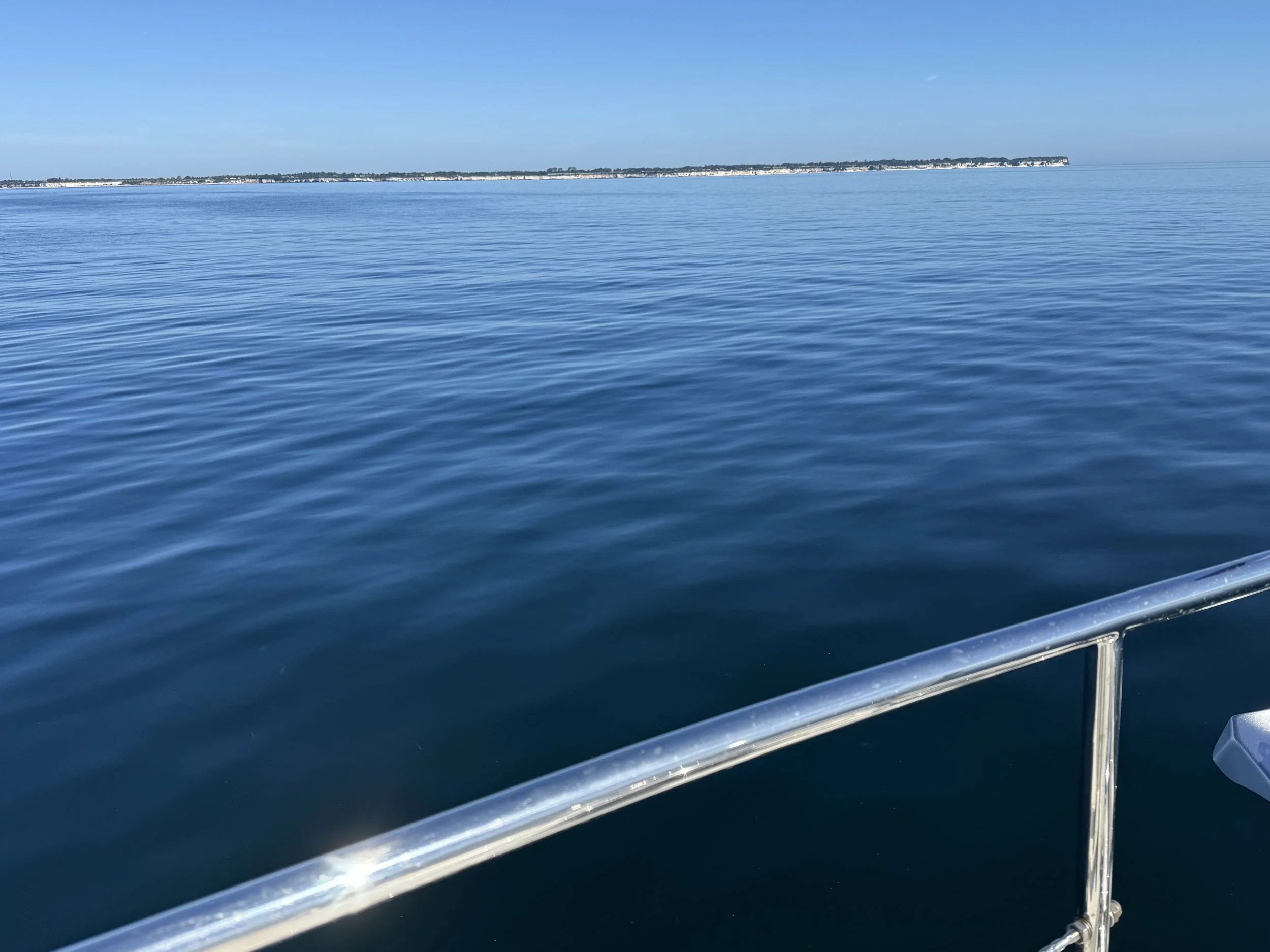

I had emailed the harbormaster at the marina in the town of Mosede, 40km south of Copenhagen, to inquire if we would fit into their berths. Tom had visited the area in 2016 and has a friend living nearby. The harbormaster responded that he would find a space for us, so the next morning we sailed north and into the tiny harbor which is one part fishing port, one part boatyard and one part pleasure boat marina. We sidled into a tiny space along the wall in front of another powerboat. There was no electricity but we didn’t need it. The marina staff was incredibly kind and helpful, giving us a chart of Danish waters and highlighting loads of suggestions for places to visit. It’s a charming little community of locals with a welcoming vibe and a tight-knit neighborhood feel. We felt right at home.
That evening we were invited to Tom’s friend’s house; he and his wife shared their lovely home with it’s gorgeous garden and we enjoyed a terrific home cooked meal, lively conversation and lots of laughs. We are so grateful for their friendship and generous hospitality. What a wonderfully sweet introduction to Denmark.
Note: photo captions will not appear if viewing on a cell phone.


